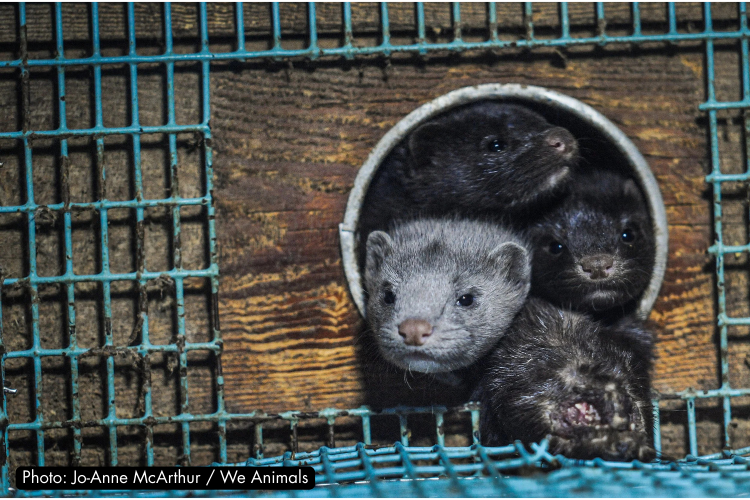Endangered Species Act revisions: what’s at stake for US wildlife?
The blue whale, Mexican wolf and much other American fauna and flora may soon go the way of the passenger pigeon and ivory-billed woodpecker. That's because the second Trump Administration is trying to finish the work of the first Trump Administration and effectively kill the Endangered Species Act (ESA), which has saved so many animals and plants from disappearing from the lands, waters and skies over the last half century.
The Fish and Wildlife Service (FWS), which enforces ESA on land and sky, and the National Oceanic and Atmospheric Administration (NOAA), which governs it in waters, proposed rules in April that would greatly weaken protection under the act by limiting prohibited activity, defined as “harm” and “take” to directly hunting, assaulting or otherwise interfering with a protected creature or plant, instead of the long-standing definition, which includes damaging or destroying its habitat.
In 1995, the U.S. Supreme Court upheld the traditional definition under the Chevron doctrine, which stated that courts cannot substitute their own judgment for that of a federal agency if the law allowed discretion. But last year, the court overturned Chevron and allowed courts to exercise their own judgment, though the court did not overturn the 1995 ruling. It did, however, state that rules must meet the best interpretation of the law. FWS and NOAA now say that the best definitions of “harm” and “take” mean directly striking the endangered species, not meddling with their environment.
When explaining the proposal, FWS and NOAA indicated it would likely reduce “burden on a substantial number of small entities but it can't say how much and invite comments on possible economic impact. “We are proposing to undertake this revision because we believe it is compelled by the best reading of the statutory text,” the government explained. It declined to produce an environmental impact statement on the grounds that it would “have no significant individual or cumulative effect on the quality of the human environment.”
Environmental and animal rights organizations, predictably, expressed outrage and mobilized to fight the proposal. “Destroying trees that birds need for nesting and rearing chicks, filling in wetlands that fish depend on for spawning, and paving over grasslands that reptiles require for foraging, would no longer be prohibited,” notes the Animal Welfare Institute.
The Center for Biological Diversity (CBD) noted that “habitat destruction is the biggest cause of extinction.” Noah Greenwald, codirector of endangered species at CBD, said he doesn't expect the government to change the policy much based on public comment. “We are certainly going to challenge it in court and I think we have good legal arguments.” Anything that results in a taking is prohibited by the law and that includes chopping down trees that destroy the homes of endangered or threatened spotted owls, he said. “It's hard to see how destroying an endangered species' habitat doesn't harm it.” Development encroaching on Florida panthers threatens their survival but couldn't be stopped under the proposed definition, Greenwald pointed out.
EarthJustice stated that the proposal 'would invite timber, oil, mining, and other extractive industries, as well as the government and individuals, to try to destroy habitat where endangered species live, eat, and raise their young, even if the damage to that habitat clearly harms those species.”
Defenders of Wildlife gave Species Unite a statement saying its research showed that “90% of ESA listed species are threatened by habitat loss. That means there are over 1,200 species at risk of extinction in the United States because their habitats are so deeply degraded. Species that could be further imperiled by the new Trump administration interpretation include a wide variety of iconic animals such as the Florida manatee and panther, the North American wolverine and the whooping crane.”
Photo: NOAA
Within two weeks of announcing the proposal, more than 125,000 people responded, many opposing the change. And interested NGOs often wait till the last minute to file comments. “If the proposed rule is adopted, destroying trees that birds need for nesting and rearing chicks, filling in wetlands that fish depend on for spawning, destroying beaches that sea turtles need for nesting, fragmenting salmon runs that killer whales require for feeding, and paving over grasslands that reptiles require for foraging would no longer be prohibited,” Jane Butler wrote.
A wastewater engineer named Hayley Voelkers from Tulsa, OK wrote that “(i)t is my job to ensure that the infrastructure can be built while at the same time meeting the goals of ESA, and in my experience this is a doable and worthwhile task. It is possible, and critical, to protect wildlife in all manners of development. Given my background, I think it is preposterous to say that allowing the destruction of an endangered species' habitat would help to preserve and save endangered species from extinction.”
A conservation biologist named Holly Jones stated that the “only result of this rule is the gutting of the act, the extinction of species, and business interests getting richer on the backs of our natural resources.” Nicholas Cheranich of Napa. CA added “(r)emoving 'harm' from the ESA regulations would limit the government’s ability to prevent destructive activities before irreversible damage occurs. It would also invite legal loopholes, enabling industries and developers to sidestep responsibility for actions that damage critical habitat, even when such damage results in population decline or death.”
A 30-day public comment period expires May 19. You can let the agencies know what you think by filing comments at Regulations.gov. The organizations linked to above also provided suggested comments, though you may want to file your own thoughts.
Written by Charles Pekow
Charles Pekow is an award-winning journalist whose environmental stories have appeared in the Washington Monthly, Earth Island Journal, Mongabay News, Northern Virginia, Truthout, and other periodicals. He broke the story about how the first Trump administration was destroying the Endangered Species Act.
We Have A Favor To Ask…
Species Unite amplifies well-researched solutions to some of the most abusive animal industries operating today.
At this crucial moment, with worldwide momentum for change building, it’s vital we share these animal-free solutions with the world - and we need your help.
We’re a nonprofit, and so to keep sharing these solutions, we’re relying on you - with your support, we can continue our essential work in growing a powerful community of animal advocates this year.






